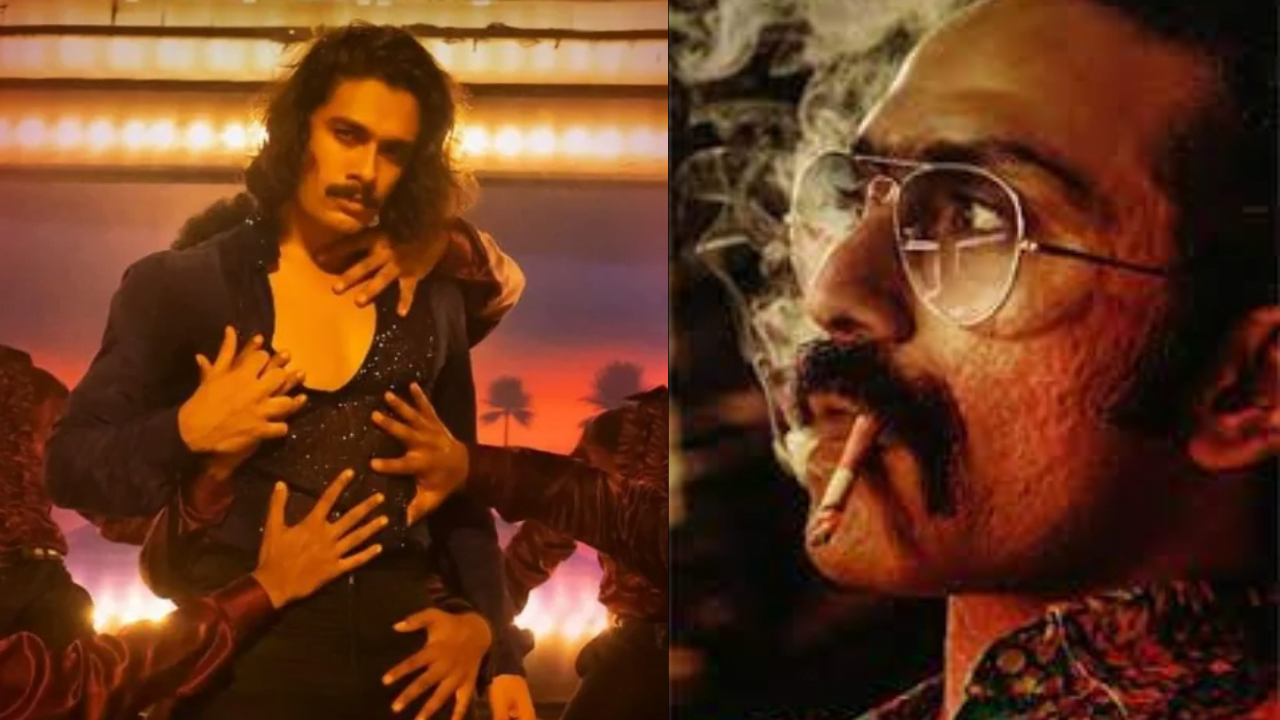Malayalam film Bheeshma Parvam, literally translated as a chapter of Bheeshma, had this ever-new element of a male item number, Rathipushpam, with a clearly implied dominant bisexual voyeuristic gaze. Most probably this is the first historic time for the Indian film industry where a message is openly communicated.
“. . . item song, a vampy song with suggestive lyrics and hypersexualised imagery of dancing women . . .” states Ketaki Deshpande; reflecting different tensions of gender. Here, the female is the most common object of the gaze, thus item dance becomes synonymous with the hypersexual dance of females.
Therefore, the term male is required to be inserted before the unfamiliar male-dominated dances or male item numbers. Some might argue for Ranbir Kapoor’s Jabse Tere Naina or Srk’s Dard-e-disco, but do they all really fall under the category of one? No.
The male dancer is probably the central character of the film and this song only means to project himself as desired by all, powerful and intelligent. For example, the flinging of coins or cash at ‘her‘ only, and not at ‘him.’ Therefore, she is reduced to a petty fellow who lives by building and satisfying the cheeky and carnal desires of males.
The element that adds to the confusion in male and female item numbers is the fetish and objectifying factor. It is persistent in both as the main ingredient whether male abs or female curvaceous structure of dancers. There is also a key element that demarcates both separately.
The status and power thrust upon the female and male dancer as part of the film is widely varied. The female item dancer is an outsider with no great functionality rather than as an erotic or espionage element.
On the other hand, the male dancer is probably the central character of the film and this song only means to project himself as desired by all, powerful and intelligent. For example, the flinging of coins or cash at ‘her‘ only, and not at ‘him.’ Therefore, she is reduced to a petty fellow who lives by building and satisfying the cheeky and carnal desires of males.
Rathipushpam, from the film Bheeshma Parvam where the character Peter Anjootti (played by Shine Tom Chacko) makes an intense gaze at the lead male dancer at the shoot of a musical sequence. It is Anjootti who selects the close-fitting suit-like costume and choreographs the sensuous steps often seen in the female item songs or strip-house-themed item songs.
Other than these, the character Peter Anjootti’s constant fights and marital discords with his wife that with time lead to his enmity with the protagonist. These cues strongly suggest the bisexuality of the character and conveniently displace the gaze from heterosexual to the marginalised spectrum of bisexuality in the song.

“. . . I read many discussions which hint that he could be gay. There are more chances that he could be bisexual. That’s how we structured that character,” mentions Amal Neerad, director of Bheeshma Parvam. Thereby markedly giving space to their invisible presence.
The film also invariably suggests their presence since ages because the film is technically placed in the 1980s and the character of Peter Anjootti can figuratively refer to one of the hundred sons of Gandhari and Dhritarastra, from Mahabharata. Thus, it visualises the presence of diverse sexual orientations from time immemorial and their continuing efforts to be heard and seen.

It was the famous Malayalam dancer, Ramzan Muhammed who took up the role of the central dancer in the song. He is known for his quick and flexible movements that are captivating. But the makeover for him, his chiselled abdominal muscles, and pecks, his fit body and his costume add to the attractiveness of the song.
When the song begins he duly melts away in the song with power packed performance pitched by energy and sensuousness. He is choreographed in these steps by the character Peter to add to his gaze and thereby his satisfaction.

This song brilliantly reverses the visual gaze from the female to the male, different from ordinary item songs. It, therefore, objectifies the male body as the site of gaze that can be enjoyed in the same way as the female body.
The politics of the song lies in the fact that it establishes that from the context of item number whatever the body is gender-wise or as per the sexuality, it is always taken up and enjoyed by the audience alike, catering to all types of viewers.
The difference it includes from the ordinary item songs is that the costume covers the body completely in a black suit except for the chest, bell bottom pants and black shoes. The dance step includes the side bending seen often in female dancing and also the hot and energetic male steps too.
The film depicts them to be enjoyed and gazed at by the male only including that of the cameraman. But it was thoroughly taken up by all age group audiences, as seen from the remaking in reels and YouTube videos.
The song lyrics are another significant part to be considered with the usual sexual overtones. The lyrics describe the function of nature to bring together the ones who love and the different parts of the body are described to accentuate the feel of the song. But it doesn’t specify the love that is heterosexual or homosexual, making it all-way universal. It, therefore, celebrates the process of coming out and making love an unavoidable and significant part of life.

The setting of the song is also a factor to be scrutinised for implied meanings. The dance is set up on a stage with a decorated and painted background as that of an alienated road in the sunset with palms on both sides. The two sides of the central stage are brilliantly painted in rainbow shades and highlighted with minute lights. Most part of the setting is unattractive to the eyes except for the lighted rainbow on either side. It is the clear connotation of the LGBTQ+ presence in the film.
Apart from some minor loopholes, the song skillfully captures the essence of reversing the gaze and sexual politics in catering to the audience. It creates a female gaze and gazes from the various genders who dynamically look and receive it. Thus, it tries to erase male or female categorisation on the body but depicts it as a sight of celebration.
For the Malayalam film industry where item numbers are a few, the addition of Rathipushpam creates a new space for discourse and practices and draws back its audience who derived it from the neighbouring film industries.
About the author(s)
Vidhu (she/her) is an emerging writer with Masters in English language and literature, keen on learning the politics of the world around her. She has dreams to create a career in journalism and writing, where she unburdens her self. She has a great taste for movies from varies geographical spans and pens down poetry in magical charms. She is open to projects or research centring on humanities.






